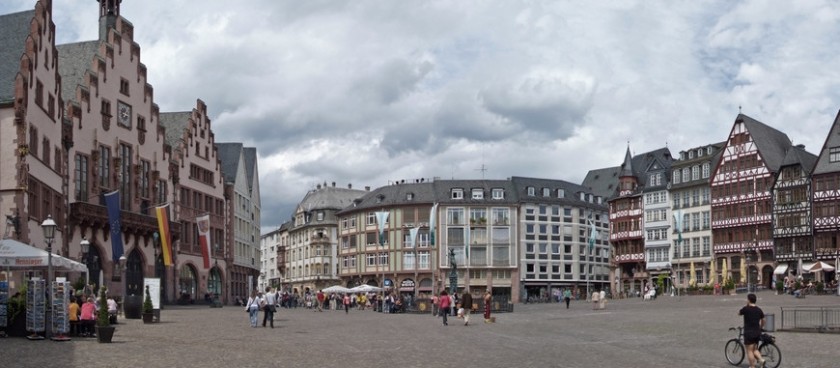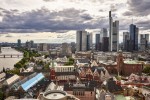- #DE64
- Römerberg 26, 60311 Frankfurt am Main, Germany
- +496921238800
- info@infofrankfurt.de
- http://www.frankfurt-tourismus.de/
- 50.1102741, 8.6821762 Copy to clipboard Copy
-
#Family time
Römer Square, unlike the Banking Quarter of Frankfurt, am Main, is not located at a 200-meter height, but is one of the symbols of the city, its hallmark. Its recognizable architecture can be seen on souvenir and printed products - magnets, postcards, branded T-shirts and more. This is where there is always pandemonium. Numerous tourists with cameras invariably strive to capture the colour of Römer - houses whose stepped roofs evoke a special emotion and nostalgic delight in the viewer.
The name of the square comes from the eponymous old town hall of Frankfurt. The German "Römer" translates to "Roman". The city government building is over six centuries old.
The town hall occupies the centre of the Römer square. Its façade is a real masterpiece. The decor is represented by statues of legendary rulers (Charles IV, Ludwig II and Maximilian II of Austria). The interior decoration of the building impresses the viewer even more. The interiors have been restored as carefully as possible after the destruction during the war. The work was carried out using old drawings. Everything has been recreated here - from the large Imperial Hall and the elective room to coats of arms, frescoes and other small (but important) details.
The construction of the town hall is quite remarkable. It seems that it consists of 3 separate buildings. So, in essence, it is. All 3 houses were bought simultaneously by the City Duma for their own needs in 1405 (March 11). The local political centre - the Treasury, the town hall itself and the registry office - settled in the buildings and began to function.
The name "Römer" refers to the central house. Where it came from and when it was formed, no one will say for certain. There are many theories of its origin, each one is fascinating and reliable in its way. However, the venerable Frankfurt public remained unconvinced and did not take any of them as dogma.
In addition to the Town Hall, there are other notable buildings on Römer Square. For example, the cathedral and the surrounding houses. All of them were erected in the XIV-XV centuries. The common style is Gothic. However, the structures are not authentic. The reason for this was the Second World War. The building was mostly destroyed and rebuilt later. Nevertheless, the copies are no different from the originals, executed with pedantic surgical precision.
The importance of Römer Square can hardly be overestimated from the point of view of German history. From the Middle Ages to the 17th century, elections and coronations of royalty were held here. Later, the Reichstag was located in the town hall itself. Simultaneously with the political building, the building was used for economic purposes - fairs were held in it.
Today there are many souvenir shops and shops on Römer. Prices in them are frankly going through the roof. Therefore, wanting to save money, you should go deep into the city. And the farther from the square, the cheaper the memorable trinkets will cost. This should be taken into account by every tourist who does not want senseless spending.
How to get to Romer Square
Metro Römer - U4, U5
Tram Römer - 11, 12

